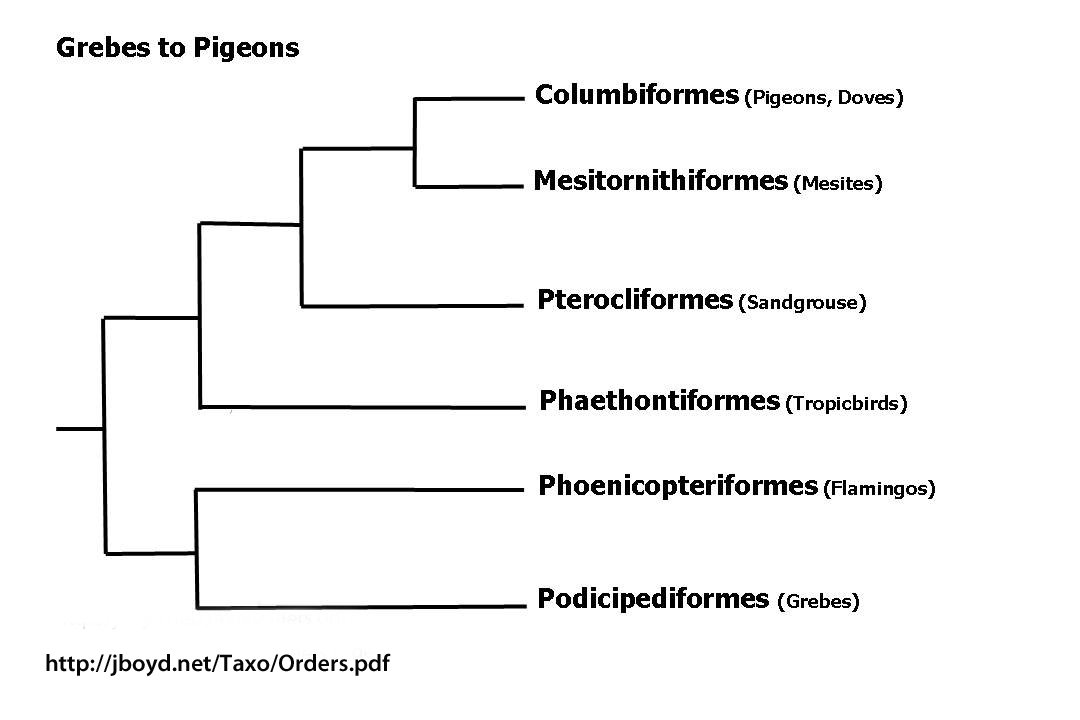Podicipediformes
Podicipediformes are an ancient order of foot-propelled diving birds with about 22 species, which, unexpectedly, share a common ancestor with flamingos. The cladogram shows their position among the six clades encompassing the orders from Podicediformes to Columbiformes and termed Columbimorphae by Boyd. These orders are now thougtht to originate from a common ancestor.

While on the surface, grebes usually swim with alternate strokes of the feet. Underwater, the feet move simultaneously. Between recovery and power strokes, the feet are turned 90° so that the broad side can be used for propulsion; just before the recovery stroke, the feet are rotated in the opposite direction.
Both parents share in nest building, incubation, and care of the young. The long pair bond that makes this possible is formed and strengthened by elaborate courtship displays, including ritualized preening, head shaking, diving, weed carrying, and rapid water treading with the body in a nearly vertical position. Interestingly, in nearly all courtship ceremonies, the roles of the sexes are interchangeable. The same is true of the precopulatory displays, and reverse mounting has been reported for all species studied.
Grebes are noted for the silky plumage of the underparts, which formerly was much used in millinery; and also for swallowing feathers, which form a plug in the pyloric pocket of the stomach, filtering material passing to the intestine. Adults feed feathers to the young, establishing this plug shortly after hatching. Grebes eating fish tend to maintain masses of feathers in the main portion of the stomach, presumably to hold fish bones until they are digested.
http://jboyd.net/Taxo/Orders.pdf
grebe. (2011). Encyclopædia Britannica Ultimate Reference Suite. Chicago: Encyclopædia Britannica
http://en.wikipedia.org/wiki/Grebe